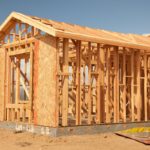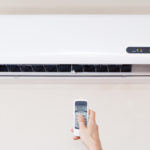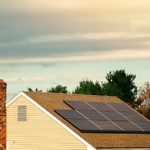As buildings account for 39% of energy use in the US, a new trend called green building is on the rise. Building green includes opting not only for energy-efficient models of construction and renovation, but for water efficient components, eco-friendly building materials, waste and toxics reduction components and improved air-quality, as well. In order to financially help you retrofit your home, the Government offers energy incentives for the upgrades in residential buildings.
Insulation
Insulation reduces heating and cooling costs significantly. The measure of the insulating effectiveness is the R-value. The higher the R-value, the better insulation. The R-value depends on a large number of factors, including the type of insulation materials (its thickness and density), the location of insulation, the climate and the type of heating and cooling systems you have.
Before choosing the type of insulation and the insulation material, you should be familiar with following information – where you want to install insulation, the R-value of materials, the ease of insulation, the indoor air-quality impact of insulation, etc. The most common places of insulation are duct systems, exterior walls, cathedral ceilings, floors above an unheated garage, foundation, a basement, concrete slabs and a crawlspace.
Windows
A great variety of advantages of double glazed residential windows makes them an ideal energy-efficient option. Consisting of two glass panes between which inert gas/dehydrated air is sealed, double glazed windows provide excellent thermal insulation. Dehydrated air molecules are less mobile than regular air molecules, meaning they transfer less heat. As far as inert gases, such as krypton, xenon, or argon are concerned, they provide even better thermal insulation than dehydrated air. In addition to this, these windows will also help you achieve optimal noise reduction.
Doors
The best investment is installing an energy-efficient door with a steel skin, a polyurethane foam insulation core and a magnetic strip for weather-stripping. Glass doors are considered a poor insulator, but if you want this kind of door in your house, choose a double-glazed door. Before installing a pre-hung door, apply expanding foam caulking between a new doorframe and the rough opening and the threshold. Storm doors are usually a good option if you have a non-insulated door.
Renewable energy systems
A geothermal heat pump is usually installed when building a new house. Its main disadvantage is that it cannot be moved. When it comes to solar energy, you can consider a solar electric, or photovoltaic system for the production of electricity and/or a solar water heating system. If you live in a rural area, you can benefit from a small wind electric system, while a microhydropower system is a good choice for houses with an access to flowing water.
Appliances and electronics
Energy Star products are labeled this way if they are more energy-efficient that the minimum government standard tested for each product. Before purchasing, calculate electronic energy use of your current appliances and electronics, consider the price of an Energy Star product and its estimated energy use in order to know which model and brand to buy at what price.
Eventually, you should include passive solar design of the home in order to maximize energy-efficiency. The orientation of the home so that you can optimally benefit from sun exposure is extremely important. Plant trees providing a shade in the summer and enabling sun penetration in the winter. Consider window treatments, external shading and LED lights, too.









![How To Heat An Old Home With Modern Technology [infographic]](https://www.bruzzesehomeimprovements.com/wp-content/uploads/2016/03/infographic-modern-technology-to-warm-an-old-home-150x150.jpg)